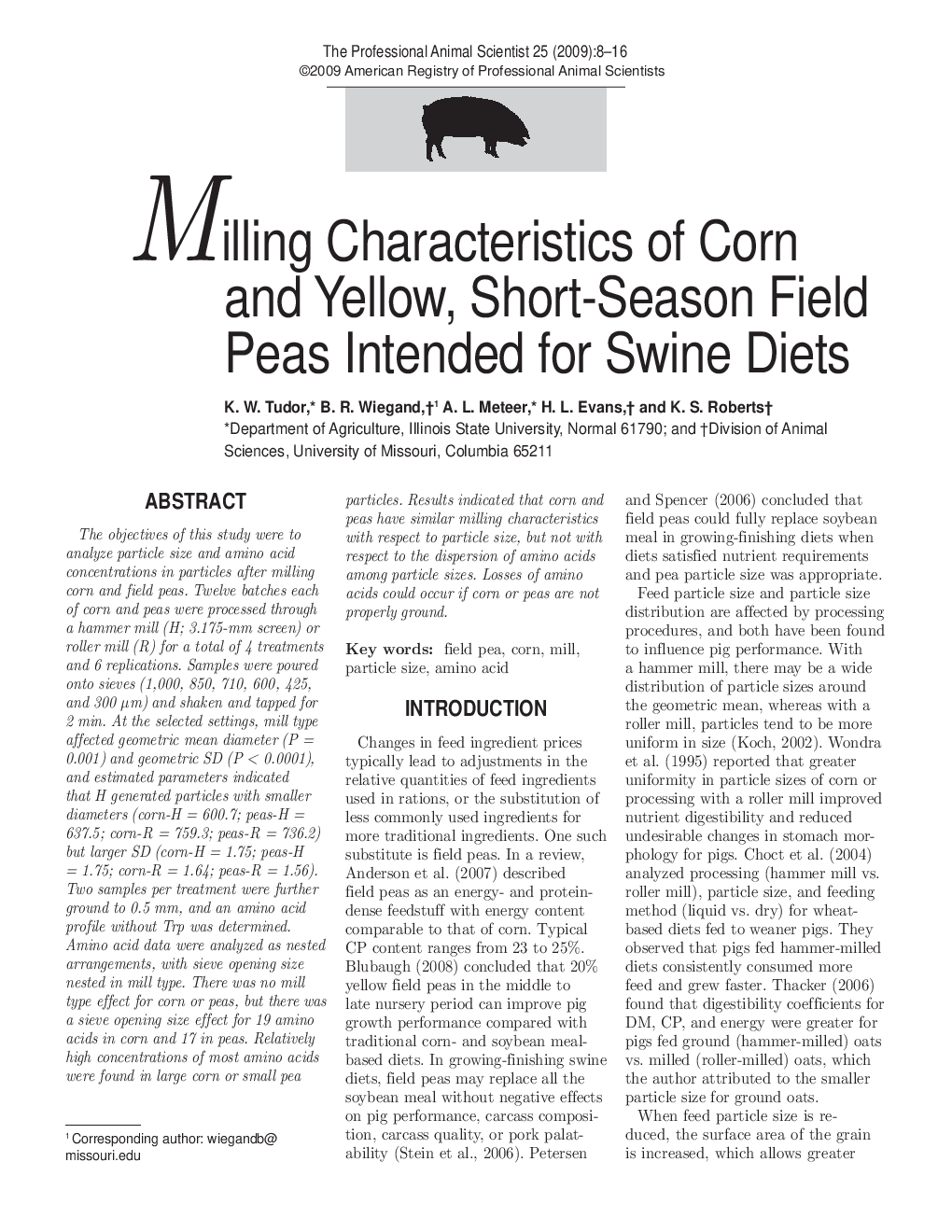| Article ID | Journal | Published Year | Pages | File Type |
|---|---|---|---|---|
| 2454460 | The Professional Animal Scientist | 2009 | 9 Pages |
Abstract
The objectives of this study were to analyze particle size and amino acid concentrations in particles after milling corn and field peas. Twelve batches each of corn and peas were processed through a hammer mill (H; 3.175-mm screen) or roller mill (R) for a total of 4 treatments and 6 replications. Samples were poured onto sieves (1,000, 850, 710, 600, 425, and 300 ¼m) and shaken and tapped for 2 min. At the selected settings, mill type affected geometric mean diameter (P = 0.001) and geometric SD (P < 0.0001), and estimated parameters indicated that H generated particles with smaller diameters (corn-H = 600.7; peas-H = 637.5; corn-R = 759.3; peas-R = 736.2) but larger SD (corn-H = 1.75; peas-H = 1.75; corn-R = 1.64; peas-R = 1.56). Two samples per treatment were further ground to 0.5 mm, and an amino acid profile without Trp was determined. Amino acid data were analyzed as nested arrangements, with sieve opening size nested in mill type. There was no mill type effect for corn or peas, but there was a sieve opening size effect for 19 amino acids in corn and 17 in peas. Relatively high concentrations of most amino acids were found in large corn or small pea particles. Results indicated that corn and peas have similar milling characteristics with respect to particle size, but not with respect to the dispersion of amino acids among particle sizes. Losses of amino acids could occur if corn or peas are not properly ground.
Related Topics
Life Sciences
Agricultural and Biological Sciences
Animal Science and Zoology
Authors
K.W. Tudor, B.R. Wiegand, A.L. Meteer, H.L. Evans, K.S. Roberts,
